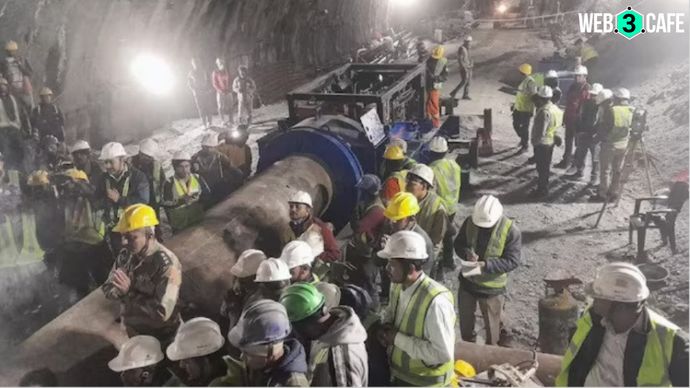DRDO's mini drones and robots help rescue 41 workers in Silkyara Bend-Barot tunnel collapse
A team of robotics experts from the DRDO has been deployed to assist in the rescue efforts at the collapsed Silkyara tunnel in Uttarakhand, India. The team is equipped with robots that can be used to search for and extract survivors from the rubble.

Highlights
- A team of robotics experts from the DRDO has been deployed to assist in the rescue efforts at the collapsed Silkyara tunnel in Uttrakashi, India
- Robots can be used to explore the status of the debris by inserting micro drones
- These robots will provide valuable information to rescuers about the stability of the tunnel and the location of any trapped workers
On the ninth day of rescue operations at the collapsed Silkyara Bend-Barkot tunnel in Uttarakhand, India, efforts are now focused on vertical drilling, aiming for the quickest possible route to reach the trapped workers. A team of robotics experts from the Defence Research and Development Organisation (DRDO) has also been deployed to assist in the rescue efforts.
The DRDO team is equipped with robots that can be used to explore the status of the debris by inserting micro drones and other high-tech robots through a cavity on the top of the tunnel. These robots will provide valuable information to rescuers about the stability of the tunnel and the location of any trapped workers.
We are doing everything we can to safely rescue the workers from the tunnel. However, due to the unstable conditions of the tunnel, it may take another 2-3 days.
Gadkari also assured that a thorough investigation will be conducted once the rescue operation is complete to determine the cause of the collapse and prevent similar incidents from happening in the future.
The Silkyara tunnel collapse occurred on Sunday, 12 November, trapping 41 workers inside. Rescue workers have been working tirelessly since then to reach the trapped workers, but progress has been slow due to the challenging conditions.
The use of robotics in rescue operations is becoming increasingly common, and the DRDO team's deployment at the Silkyara tunnel is a testament to the potential of this technology to save lives. These robots can enter hazardous environments that would be too dangerous for humans, and they can provide valuable information to rescuers about the situation inside the tunnel.
The rescue efforts at the Silkyara tunnel are a reminder of the importance of collaboration and innovation in disaster response. The combined efforts of government agencies, rescue teams, and technology experts will be crucial in bringing the trapped workers safely home.
